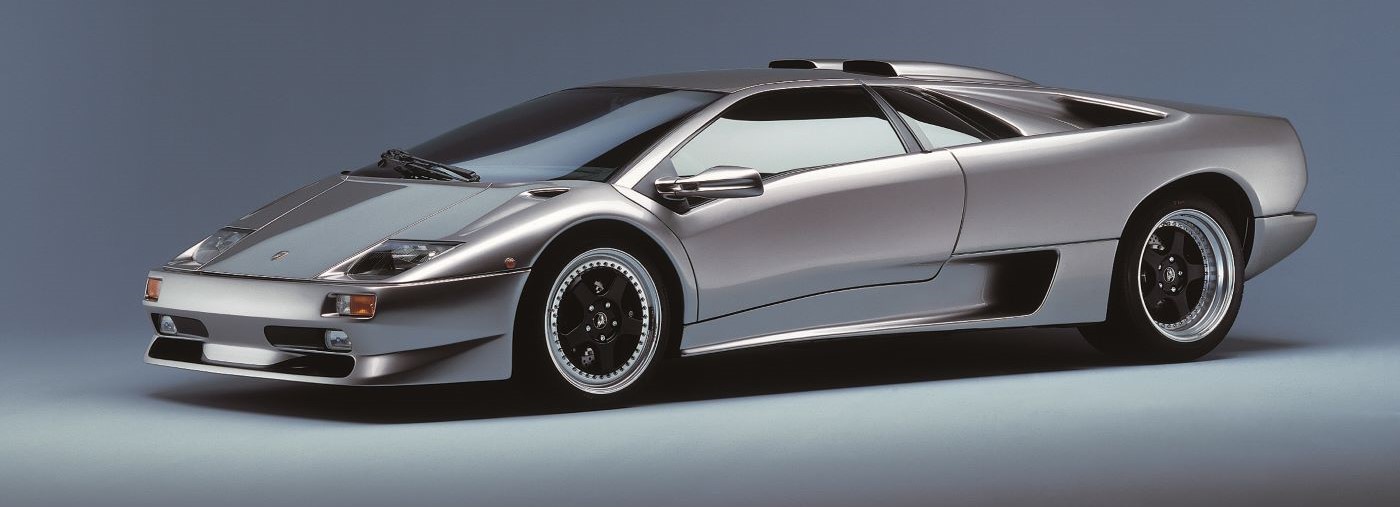
The supercar of the future
The Diablo was destined to become the worthy heir of the renowned Miura and Countach. This new supercar was wide, low and futuristic. And just like its predecessors, the Diablo soon became a favorite among car enthusiasts across the world.
The Countach’s successor was presented in 1990. The 132 was dubbed the Diablo, the name of a particularly fierce fighting bull of the nineteenth century, and it proved to be up to expectations. The Countach’s follower could not be a conventional car, of course, and it had to be extreme, spectacular, forceful and uncommon: the Diablo, with its 492 hp generated by a 5.7-litre V12, was all this – and more.
Its designer is Luigi Marmiroli. In 1990, the Diablo was presented in the two-wheel drive version, but a four-wheel drive version was already in the wings, and from that point on this would become a distinctive feature of the top Lamborghinis. This version, named the Diablo VT for ‘Viscous Traction’, given the presence of a viscous coupling between the front and rear axles, was presented at the Geneva Motor Show in March 1993.
The Diablo was developed and many collateral models were derived from it, some of which would prove to be very popular with certain consumer ranges. Some of the most interesting were the 1995 SV, a lighter and more powerful model that placed a premium on driving pleasure over comfort, and the VT Roadster with a Targa-style removable roof, which was instantly a hit, particularly in the United States. Other special editions, such as the SE, Jota, Monterey, Alpine and many others, were derived from these models.
The Lamborghini bosses had wished for a maximum speed of at least 320 kph, and the engineers made this wish come true: With a top speed of 325 kph and an acceleration from 0-100 in 4.5 seconds the Diablo claimed the pole position in the super sports cars segment.
It delivered its power via a rear-wheel drive and came with a newly developed V12 engine. Four valves per cylinder, a computer controlled multi-point fuel injection and a displacement of 5.7 liters helped produce a maximum of 492 HP.
In 1996, a single-make championship was also inaugurated thanks to the organisation of a series of races to be held in Europe, with regulations similar to the ones followed by established international championships. A circuit version of the Diablo – the SVR – was made for this championship. In 1999, its on-road evolution was announced (the GT an ultra-sporty road version produced in a limited series of 83 units) as well as the circuit model for the new cycle of races for this trophy GTR, with a 6-litre 590-hp engine, produced in a limited series of 32 units).
In the meantime, Luigi Marmiroli left Lamborghini for personal reasons and Massimo Ceccarani took his place. The need to develop new models and thus to make major investments along these lines was evident. By this time, the Diablo was more than seven years old, a very long time in this difficult market.
The Diablo was produced between 1990 and 2001. During this period, Lamborghini introduced several variations of the Diablo concept, the first being the Diablo VT (Visco Traction), which featured an all-wheel drive.
The Diablo models helped build the legend of Lamborghini and sold well. Almost 3,000 units across all series and variations found their buyers in those eleven years of evolution.
The Diablo came to an end in 2001 with the Murciélago as it’s successor.
Diablo Gallery
Diablo Specifications
Engine
- Engine Type: Naturally aspirated V12
- Displacement: 5.7 L (1990–1998), 6.0 L (1999–2001)
- Horsepower:
- 485 hp (362 kW) in the original model (1990)
- Up to 530 hp (395 kW) in later models
- Torque:
- 428 lb-ft (580 Nm) in the original model
- Up to 457 lb-ft (620 Nm) in later models
- Transmission: 5-speed manual (6-speed manual in later models)
Performance
- Top Speed:
- Approximately 202 mph (325 km/h) in early models
- Up to 211 mph (340 km/h) in later models
- 0-60 mph (0-100 km/h) Acceleration: Approximately 4.5 seconds (varies slightly by model and year)
Dimensions
- Length: 4,460 mm (175.6 in)
- Width: 2,040 mm (80.3 in)
- Height: 1,105 mm (43.5 in)
- Wheelbase: 2,650 mm (104.3 in)
- Curb Weight:
- Approximately 1,576 kg (3,474 lbs) in early models
- Slightly lighter in later models with the introduction of carbon fiber components
Chassis and Suspension
- Chassis: Tubular steel space frame
- Suspension:
- Front: Double wishbone, coil springs, telescopic shock absorbers, anti-roll bar
- Rear: Double wishbone, coil springs, telescopic shock absorbers, anti-roll bar
- Brakes:
- Early models: Ventilated discs
- Later models: Larger discs with Brembo calipers
Exterior
- Body Style: 2-door coupé
- Aerodynamics: Low drag coefficient with a sleek design, pop-up headlights (early models), fixed headlights (later models), and rear spoiler options.
- Wheels and Tires:
- Various designs of alloy wheels depending on the model year
- High-performance tires designed for maximum grip
Interior
- Seating: 2-passenger seating with leather upholstery
- Dashboard: Customizable instrument panel, digital and analog gauges, central infotainment display in later models
- Comfort and Convenience: Power windows, air conditioning, premium sound system
Safety and Technology
- Safety:
- Early models lacked modern safety features
- Later models included driver and passenger airbags, improved braking systems
- Technology: Advanced aerodynamics, improved suspension systems, limited-slip differential, traction control (later models)
Special Editions
Throughout its production run, Lamborghini released several special editions and variants of the Diablo, each with unique features and performance enhancements. These included:
- Diablo VT: Introduced all-wheel drive
- Diablo SE30: Lightweight, track-focused version with increased power
- Diablo SV: High-performance rear-wheel-drive variant
- Diablo GT: Limited production model with extensive use of carbon fiber, increased displacement, and power
- Diablo VT 6.0: Final iteration with a larger 6.0-liter engine and numerous refinements

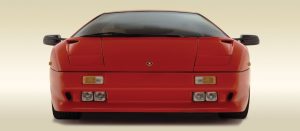
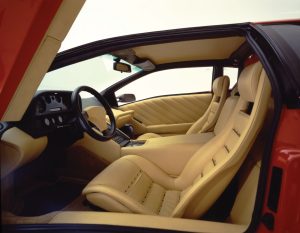




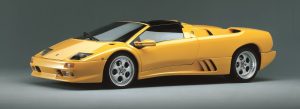
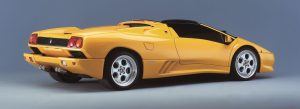
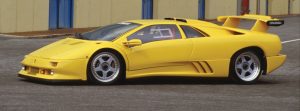



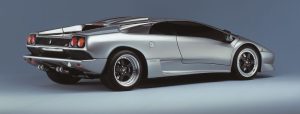
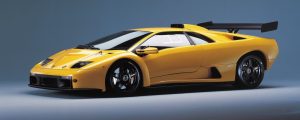


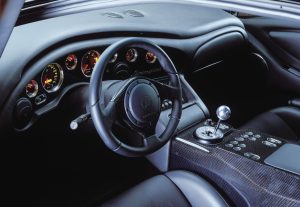
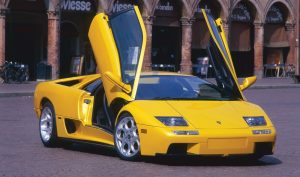
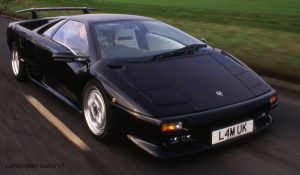
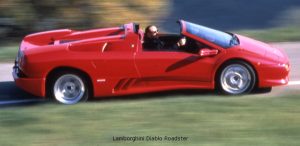
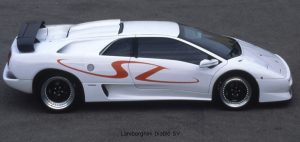
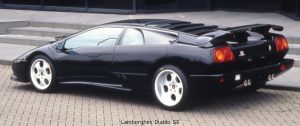
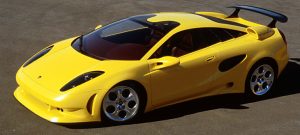
You must be logged in to post a comment.